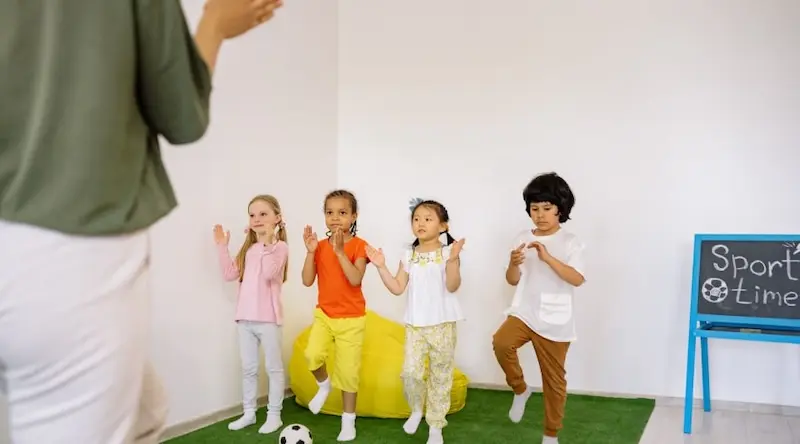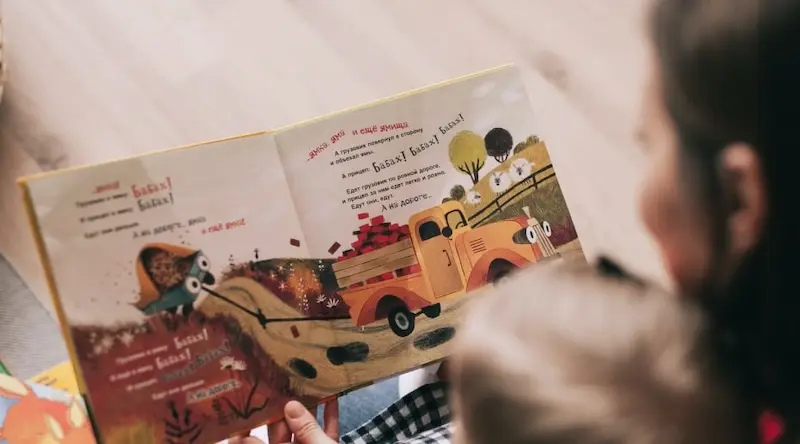settings
children
With Famly since
At the centre of the White City Estate, Randolph Beresford Early Years Centre and Vanessa Nursery School supports a community of 22 different languages. Over a third of the 139 children have a special educational need or disability, and many of the children are eligible for free school meals. It was the recognition, support, and inclusion of this unique cohort of families that won Randolph Beresford the Nursery World Award for Most Inclusive Practice, in 2019, as well as an ‘Outstanding’ from Ofsted.
That’s why we knew we had to sit down with executive headteacher Michele Barrett to give us a different perspective - on how this unique setting is embracing the new EYFS with inclusion, Famly, and a delight at the emerging focus on impact over evidence.
The big ideas
Michele's key take-aways on the new EYFS framework
- Observations are always secondary to interaction.
Never write something down when you could be interacting. Michele tells her team there should be no observations about what children ‘couldn’t’ do - respond to the child who’s struggling instead. - Assess as a team. Assessing as a team provides different perspectives on a child’s development and learning. You may know your key child best, but your team will definitely have some new insights.
- Plan for deep learning. Don’t feel pressured to change everything about your planning and provision - familiar activities provide consistency and comfort for children, while allowing them to build upon previous learning.
- Tailor your curriculum to your cohort, and include everyone. Include SEND children’s Individual Development Plans, activities, or therapies in your main curriculum, to promote inclusivity and peer-to-peer learning.
- Sharing with parents should always benefit the children. Sharing care routines can be very important for parents, but write about meals and toileting in Famly, so you don’t discuss it over the child’s head at the end of the day.
1. Don’t observe when you could be teaching
- Never write what a child couldn’t do, but use that time to teach them instead.
- Make observations short and concise - focus on what made you stop in your tracks.

“If a child is struggling to do something, and you’re ignoring them to write about it, it’s not benefiting their wellbeing.”
Michele Barrett
In the time it took to write something down what a child needs help with, you could have helped them to do it. What’s more, taking this approach means children learn they can go to their key person for support, which strengthens the relationship too.
“We want the children to know that it’s OK that you can’t do something, because they can try to have a go, and then someone can show them. We all fail at things, but it’s not a negative, it’s because we haven’t learned to do them yet,” Michele says.
Some of Michele’s practitioners had begun to feel anxiety about writing up the long observations and evaluations the team were doing previously. But, like the new EYFS, Michele tells her staff to keep writing time to a minimum, encouraging her team to pop short observations on Famly later on in the day.
“Imagine you were on the phone to that parent,” Michele has been telling her team, “Write the observation like that. Just note down what happened”.
The team found that parents also preferred the new, shorter observations they received through Famly (often with a photo), because they can share a comment about what the child has been doing at home.

2. Assess as a team
- Assessing as a team can help develop a more complete picture of a child’s learning.
- Use sensitive language with parents when discussing children’s development.
Michele recommends assessing as a team, in discussion about the child.
“You’re getting a better picture that way, as different people see different things”, she explains.
Once every half-term, the team leader in each room will arrange a meeting, after most of the children have left, looking at progress and assessment. The team use the observations recorded in Famly and their notes from the evaluation meetings they have each day. If some staff are still caring for children who stay for extended sessions, they share their information with the team leader before the meeting, so all team members’ perspectives can be included in the discussion. Inclusivity applies to everyone at Michele’s settings.
Since beginning to record development in Famly, Michele has noticed that the simplicity of creating observations has meant that her teams are sharing more with one another. As it’s so quick to note down what a child has learned, they can share what they’ve seen each others’ key children achieving. The team are also taking more photos and making group observations, leading to a much more rounded view of each child’s development and progress than before.
Taking into account how parents feel is key to building up a trusting relationship between them and the setting, which is why Michele is pleased with the new default phrasing for assessments in Famly (‘Progressing well’, ‘Give more support’ or ‘Needs special support’). When discussing a possible developmental issue with parents, language needs to be non-threatening and focus on supporting development, rather than what a child can’t yet do.
“It tells us exactly what we need to know, but it’s not scary for parents either.” says Michele.
3. Plan for depth of learning, not just to ‘move children along’
- Don’t feel the need to “tick a box and move on” when planning activities for your children.
- Audit your provision for the seven areas of learning so it can remain constant and allow children to revisit, practice, and master skills.
At Randolph Beresford, they have a modern take on the Froeblian approach. It means they never want to just tick a box and move on, preferring to always focus on deep learning.
“We don’t need to rush children through things,” says Michele, “it’s about deep learning and understanding. You have to be able to listen and hear the difference between a car alarm and a bird, before you can move on and recognise phonics.”
A good example of this progression is how they build up to following a recipe. To begin with, children get the opportunity to begin experimenting with combining all kinds of materials. Next they can mix ingredients together with an adult, then use visuals to see what needs to be added, before they move onto mixing playdough independently.After that, finally they’re ready to follow a proper recipe for a cake.
“Following a recipe was chosen to enable the children to follow a process through to the end. So much of young children’s learning is about the process, not the product, but we believe that children also need to know that a product is sometimes useful and that a process does not just end randomly” explains Michele.
Every evening, when each classroom meets to evaluate the day, the team discuss the learning that’s happened, share observations, and plan for children’s explorations going forward.
However, the setting’s ‘core experiences’ remain constant, with ongoing additions to build on skills. A home corner, for example, may stay roughly the same, but have books and writing materials added to extend learning. In an area of such high deprivation, this confidence in knowing that something familiar won’t just disappear can be especially important, and demonstrates how the team designs their provision with their specific cohort in mind.

4. Identify the unique needs of your cohort to design your curriculum.
- Based on the families who use your setting, identify the needs that must be met.
- Consider how you can include all children in the curriculum you’re delivering.
“We are aware that not all children have the same experiences outside of nursery, to enable their interests to develop fully into learning experiences,” Michele explains. Randolph Beresford’s focus on nature and the environment (through their forest school), is just one way the settings’ curriculum reflects the cohort and location of the settings.
Children are given the opportunity to climb trees, build with wood, and risk assess their own outdoor activities. This is a linchpin in the settings’ curriculum, as it gives them the skills to notice the difference between a good and bad choice themselves.
A high number of SEND children, especially children with specific speech, language, and communication needs, leads the settings curriculum to focus heavily on inclusivity and supportive relationships. Each week, the SENCo joins the team’s daily evaluation meeting, to discuss inclusive provision for children with additional or complex needs, as well as children under Child Protection or Child In Need plans. Once a month, the setting’s psychologist joins each classroom’s evaluation meeting, to discuss children presenting with particular emotional needs, to support each team’s inclusive practice.
Children with individual care or development plans are not ‘sent off’ to complete their activities alone, or just with their key person, but rather their care plans are included in the main curriculum, so these children are completing their activities amongst their friends. This promotes peer-to-peer learning and strengthens their relationships. The settings also share a speech and language activity in the Famly News Feed every two weeks, so every family can benefit from it.
5. Sharing with parents must be for the children’s benefit
- Don’t talk about children’s personal care routines over their heads - that’s what Famly’s for.
- The ‘what’s next’ box in observations can be used for what parents can do at home to extend learning.
Vanessa Nursery and Randolph Beresford Early Years Centre mold their parental communications around respect for the children. “When children are here, this is their space,” explains Michele. The settings share a weekly post for parents on the News Feed in Famly, with a brief overview of what the children have been doing, but young children listen to everything, so take the time to think about how you feed back about their individual day.
“I could think of nothing worse at the end of a lovely day at nursery, standing next to the legs of your parent and key person while they discuss how you went to the toilet,” says Michele,
Children’s care routines can be added in Famly, meaning practitioners can focus on sharing the real highlights of a day, or letting children do this themselves.
Michele says that Vannessa and Randolph Beresford parents often ask what they can do at home to support their children, so they’ll use the “What’s next?” (formerly ‘Next Steps’) box in observations, to give them manageable pointers or activities to try at home, as well as letting parents know what they’ll be doing at the setting.
“It’s nice for parents to see the areas of learning, but not the age bands,” Michele says, “as that can be demoralising, or worrying.”

Michele’s final word
Michele says she looks forward to the broad and unique curriculums that the changes to the EYFS will inspire, and an end of statement-based tracking once and for all! Michele says that even Ofsted previously asked for this type of evidence, despite every page of the old Development Matters stating it was not to be used as a ticklist. However, Michele believes the new way of doing things makes expectations around paperwork that much clearer, and she sums it up perfectly. “There is no responsibility to provide that type of evidence any more,” she says. “And all of that stuff going away, means staff can be in the moment with children.”
Get a personal demo now
Get a guided 1-on-1 tour of the whole platform. See what features are the best fit for you, and ask us as many questions as you like.
Book free demo










